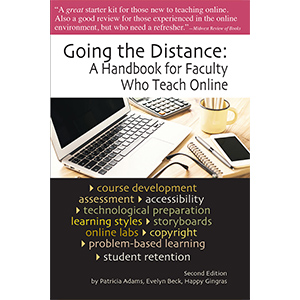Why Isn’t Anyone in Higher Ed Fixing the Crisis for Adjunct Instructors?

by Nina Huntemann
There is a crisis brewing in higher education in the U.S. I’m not referring to crushing student debt or post-pandemic disengagement — although those are both major and important issues. This crisis is about the educators.
In higher ed, it is a much-discussed but little addressed fact that many higher-education faculty in the U.S. are paid below the poverty line. Approximately one-fourth of the instructors teaching at U.S. colleges and universities are earning less than $25,000 per year, though the median household income in our country is approximately $67,000, according to 2020 data from the U.S. Census Bureau.
Those outside the higher ed space often assume most faculty members in the U.S. are tenured or on a tenure track, with “jobs for life” and a comfortable income; however, this is far from reality. The fact is that contingent faculty, those who hold non-tenure-track positions and often work on annual or semester-by-semester contracts, comprise 75% of all faculty positions, according to the American Federation of Teachers.
Contingent faculty members are deeply underserved by the academic institutions that rely on them. This has led to a host of problems for these instructors including financial hardship, lack of healthcare benefits, meager research opportunities and constant job insecurity. Also, according to the AFT, one-quarter struggle to cover basic household needs when not teaching during breaks, and many experience food insecurity and rely on public assistance such as Medicaid and Medicare. To cope, many must move between institutions to piece together multiple teaching appointments to secure a livable wage.
Many academic institutions also fail to provide contingent faculty members with essential benefits such as mental health services, paid sick leave and retirement benefits.
A recent report by Chegg confirmed these previous findings. Over one-third of contingent faculty members say low wages are their No. 1 concern, and only 30% said their institutions provide the benefits needed to perform their roles effectively or support their well-being.
Professional and career development opportunities are limited. Less than a quarter report receiving career development support, while less than half receive teaching support. And perhaps most bleak, more than one-third of those who are extremely or somewhat dissatisfied with their benefits expect to pursue a different career in the next five years.
It is high time that academic institutions begin treating contingent faculty in a manner that is more commensurate with the immense value they provide higher education. This means more competitive wages, increased benefits and job security. The academy should also be exploring how technologies and online platforms, which are cost effective and scalable, can provide contingent faculty with tools and resources to support teaching excellence and drive successful learning in their classrooms.
At a time when colleges and universities are struggling to reengage students on campus in the wake of the pandemic, the academic community needs to ensure that contingent faculty, who are the bedrock of higher education in the U.S., are well supported and adequately resourced so their students are set up for success.
These dire systemic issues must be addressed. The future of higher education depends on it.
Nina Huntemann is the Chief Academic Officer at Chegg








